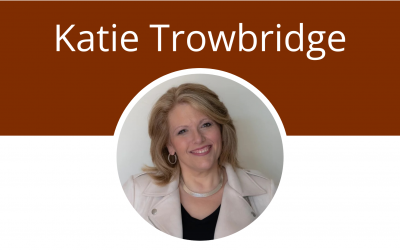Season 8 | LISTEN & LEARN
Applied Imagination by Alex Osborn
– Dr. Cyndi Burnett
Episode Transcription
LISTEN & LEARN: Applied Imagination by Alex Osborn
Matthew Worwood:
Welcome to our third episode of our summer 2024 Listen and Learn series. And as a reminder, episodes in this series are super short and designed to provide some professional development for educators and emerging scholars during the summer months.
Cyndi Burnett:
In this listen and Learn series, we are focused on classic literature from the field of creativity research, which we hope will not only offer you a historical perspective of the field, but also bridge some connections between this research and teaching and learning environments.
Matthew Worwood:
And in addition to that, we have a resident scholar in Jimmy Wilson who will be providing some commentary for these episodes and sharing that commentary on our website fueling creativitypodcast.com.
Cyndi Burnett:
And to make things extra fun, at the end of each episode we will share a single letter which is part of a secret code that you, our listeners, must guess before the end of August.
Matthew Worwood:
And if you guessed correctly, don’t forget, you must email us that code word and include a connection you’ve made with one of these classical articles that we’ve discussed and your upcoming plans for the new school year. And we will select one winner who will receive a special fueling creativity in Education podcast prize.
Cyndi Burnett:
So Matt, let’s begin. So in this episode, we are going to be talking about a very classic book around creativity that most creativity practitioners have heard of, which is applied imagination. Now, this book was written by Alex Osborne, who was an advertising executive from Buffalo, New York, which is where I’m from. And Matt, do you know what I have in my hands?
Matthew Worwood:
Well, you’re going to probably tell me that you got something better than the one I just showed, right? That’s the original version, isn’t it?
Cyndi Burnett:
I do have an original 1953 version of applied imagination that was given to me by one of my students at the undergraduate level who found it at a book library for ten cents at a book sale. And then he got about 100 bonus points in an automatic a in my undergraduate course.
Matthew Worwood:
That’s pretty impressive. And listen, if you haven’t heard of this book and you do go onto Amazon and look for it, you’ll see why we’re talking about the prize because it’s been published quite a few times. I would say that that’s probably why Cindy didn’t actually get the full name of the book correct. It’s called applied imagination. Principles and procedures of creative problem solving. See, just out of interest, is that title on there as well?
Cyndi Burnett:
It is, but I’ve always called it just applied imagination.
Matthew Worwood:
So yes, you don’t have a front cover.
Cyndi Burnett:
That’s why it’s just black, because it’s so classic and old and precious. And worth so much money.
Matthew Worwood:
All right, so I’ve got off my mv and I’ll talk a little bit about this. I mean, the first important thing I think, is just talking about Alex Osborne a little bit, because as you referenced, he was a marketing executive. And I think the reason why I’m bringing that up is that you’ve got, in essence, a creativity practitioner. This is someone who worked in advertising, obviously identified the fact that one of the strengths that he had was leading his team to the production of new ideas to support, obviously, these advertising campaigns, and got so curious about it, kind of transitioned into the academic area to, in essence, go and study and research and provide a framework of how we can engage in a creative process to support creativity. And so we spoke about the Melrose article, which was actually written after this publication. But this is a classic example of a focus towards the process aspect of creativity. And of course, so much of the conversations we have around creative problem solving, design thinking. I mean, pretty much any type of creative process, you typically can connect to what is shared in this book.
Matthew Worwood:
And we should also share the fact that there have been previous books written around the creative process. We’d spoken about Graham Wallace the art of thought, which I think was produced in 1926. But some, some key aspects of this book going through this, this creative problem solving process, and I identifying these different stages were also strategies. And one of the things that we see within this book is this strategy called brainstorming. And, you know, there’s some specific, I don’t like using the word rules, but in essence, steps to brainstorming. And the first one, you know, if you’re familiar with it, as we know, is focus on quantity over quality, and then kind of withhold judgment, entertain those wild and wacky ideas. And then we’re looking at combining and synthesizing those ideas as well. And what’s interesting is over the last ten years, I will say, is, of course, for so long we’ve spoken about brainstorming, and I think it’s so associated with creativity in the classroom.
Matthew Worwood:
The amount of teachers that I know, we’re going to do project based learning environment. We’ve got a new project, we’ve got a new challenge. We’re going to engage in a design thinking. Let’s start off with brainstorming. And I think that Alex Osborne in this book wants to emphasize the fact, well, actually, that’s a toy strategy, and typically it’s better to engage in that strategy after you’ve clarified that problem. So you’ve got all of these different stages that exist in here. But I think the other thing that I think is important to reference as well, in addition to all these different strategies. And maybe you could talk a little bit about this, Cindy, but there’s been some debate over the last five to ten years within the literature on whether or not brainstorming is actually effective.
Matthew Worwood:
And I think probably we’ll get into a conversation about context. But there are people now that have pushed back on brainstorming and at least how it was presented within this monumental work.
Cyndi Burnett:
Yes, Matt, you know, I’ve done a big study with the center for applied imagination around brainstorming, and this included 450 participants, where we looked at the separation of divergence and convergence of ideas, and using the guidelines and using trained versus untrained. And what we found is if you are trained in creative problem solving, then you are more likely to not only generate more ideas, but to generate ideas that, when converged, are more accepted and more original. So that’s really the definition of creativity. But if you have no training and you think that just by saying, hey, we’re going to brainstorm, and then knocking each other’s ideas down, it’s just not going to work. So the other problem with brainstorming is people think it’s like the end all, be all, and it’s not. It’s just a tool and a huge toolbox of suggestions that Alex Osborne came up with. And I will also mention that I know the story around the word brainstorming came from Alex Osborne. Cause he coined that term when someone in one of his sessions said, this feels like a brainstorm, when he had them generating lots of ideas.
Matthew Worwood:
Oh, yeah, I knew that. It’s cool.
Cyndi Burnett:
Yeah. And another thing that teachers might not recognize is they’re probably familiar with the tool scamper, which is an acronym that is substitute, combine, adapt, modify, put to other uses, eliminate and rearrange. And that’s often credited to Bob Eberly, who continued to develop it. But originally it was developed by Alex Osborne. So that is a tool that’s also used, again, just a tool that might help generate more ideas. He has lots of tools in the book where he shows examples, and one of my favorite examples, and he tells it from all different disciplines in this book. You know, what does creativity look like in the arts? What does it look like in the sciences? What does it look like in your relationships, how you parent? I mean, he really runs the entire scope of what creativity looks like in different contexts, which I think you alluded to that with a Vlad Glavineau, but one of the things the stories he tells is in medicine, and he said that there was a doctor who would try to get children who had cancer to think about other things than cancer while he was talking with them. So he would tell them a tale of a fictitious dog with a tail on the front of his body.
Cyndi Burnett:
And children were just entranced by the story that they would forget for a while that they had cancer. And. And that’s what he wanted, to bring sort of joy into it. But what happened was the children were so excited about the story that his wife ended up going and creating dolls, going and getting, like, toy dogs, taking the tail off and sewing the tail to the front so they could bring it to these children who had cancer to help them work through their challenges. So he shows examples like that of looking at problems in different perspectives to really help come up with creative solutions.
Matthew Worwood:
Trey and I think just to kind of build on that, it’s, again, that applicational piece and probably responding to your environment. So this episode, we joked around the fact that we probably did it in the wrong order when we were sharing the Melrose article in our second episode, which came after this publication. But what we’re talking about is this idea of process. And in addition to process, it’s really about that deliberate effort to be creative, the application of creativity. But then, in addition, we’ve got the press, the environment. And I think from a teacher perspective, when we’re talking about something like, let’s go brainstorm, generate ideas, we have to be mindful that in that classroom environment, there are lots of factors that could influence the success of that. In essence, that ideation strategy. And one of the things that I know has been explored in the literature a little bit is this concept of brainwriting.
Matthew Worwood:
So rather than just kind of like, going out there and blurting all of your ideas out, typically that might be dominated by one type of personality, one type of person in the group. Obviously, if there’s a leader in the group, they’re going to influence the ideas we generate. We’re probably going to want to conform to what we think the leader is going to do. Whether or not we feel like our ideas are actually going to be valued is also an influential factor. But if you just sit down and do some kind of brainwriting, you know, just for a few minutes, say, right, we’re to go, and we want you to just generate as many ideas as you can in response to this prompt. Anything that comes to mind, write it down, this piece of paper, or write it down, each idea on each individual sticky note. And then what you can do is then bring all of those sticky notes to the board. And maybe you set the objective of you can only go and bring the sticky books when you’ve all generated ten different ideas on your own.
Matthew Worwood:
But, like, these strategies are starting to emerge. And I think that just the different evolutions of brainstorming as a tool is fascinating. I know that I also have been part of something called brainwashing walking, which is a little bit more of a structured brainstorming session where or each base, rather, has a specific theme. So you’re not actually welcoming any idea. You’re actually trying to focus on brainstorming within a particular theme. And then what you do is you kind of like, walk around the room and build on each other’s ideas so that there’s ultimately lots of different variations of brainstorming. And to your point, lots of different strategies that have evolved over the years, as are also lots of different creative problem solving methodologies. Right now we’re talking about design thinking, but I’ve, and I think I’ve shared this in some of the chapters I’ve written.
Matthew Worwood:
If you look at every single creative process, there’s typically a close connection to some of these initial creative problem solving stages identified by people like Alex Osborn and as I said, Graham Wallace from 1926. So it’s interesting to see how it’s evolved. But to a certain extent, I would say that some of these processes aren’t necessarily original. We’ve just got better in terms of their implementation.
Cyndi Burnett:
Yes. So for those of you listening, one of the things they wrote about in the first chapter is this book, applied imagination, is really about the effect of a formal and systemized approach to a fuller utilization of the creative imagination. So it’s a deliberate process that you can bring into your classroom. And brainstorming is a single tool. So if you don’t like brainstorming, there are other tools. And he talks about it in all different ways of life. It works across disciplines and across areas of your life, which I think is a wonderful thing and a place where it sort of all began. But I mean, really, it all began in the work of JP Guilford, who we talked about in the first list of the learn series when he separated the divergent and convergent production.
Cyndi Burnett:
So this is sort of a build on this. And in a later article, which we will come to in the listen learn series, well, talk about how this evolved with the work of Sid Parnes and Ruth Knoller and Matt. I think it is time for us to wrap up so I’m going to give you a drum roll and you’re going to give me the letter. Are you ready?
Matthew Worwood:
I am ready.
Cyndi Burnett:
All right.
Matthew Worwood:
The next letter is C or Coca Cola.
Cyndi Burnett :
Cindy. Palm chocolate. Cool candy. Hey, coffee. And we’re going to end there. Thank you so much for joining us. My name is Doctor Cindy Burnett.
Matthew Worwood:
My name is Doctor Matthew Worwood.
Cyndi Burnett:
This episode was produced by Matthew Worwood and Cindy Burnett. Our podcast sponsor is curiosity to create, and our editor is Sam Atkinson.
In the third episode of the Fueling Creativity in Education Podcast’s summer 2024 Listen and Learn series, hosts Dr. Matthew Worwood and Dr. Cyndi Burnett delve into Alex Osborn’s seminal work, “Applied Imagination.” They discuss how this classic book, authored by Osborn, an advertising executive turned creativity scholar, laid the groundwork for modern creative problem-solving techniques. The hosts elaborate on Osborn’s systematic approach to harnessing creative imagination, highlighting well-known strategies such as brainstorming. They also delve into how brainstorming should be employed effectively within the classroom context, examining both historical and recent perspectives on its efficacy.
Throughout the episode, Matthew and Cyndi dissect the various strategies Osborn proposed, including the well-known SCAMPER tool, which was also originally developed by Osborn. They discuss the evolution of these tools and methodologies in contemporary education settings, emphasizing the importance of adapting them to different classroom environments. Adding an interactive twist, they introduce a secret code game for listeners to engage with and reveal the latest letter in the code. Listeners are encouraged to visit Jimmy Wilson’s commentary on their website for further insights into the discussed literature. The episode underscores that while these creative processes have evolved over time, many foundational elements remain relevant and influential in today’s educational frameworks.
Episode Debrief
Collection Episodes
Just a Banana and The Rabbit’s Feat: A Conversation with Children’s Book Author Barney Saltzberg
LISTEN & LEARN Just a Banana and The Rabbit’s Feat: A Conversation with Children's Book Author Barney Saltzberg“ And then I came up with an idea called Imagine Art. And it was finding art in cracks in the sidewalk, peeled paint, things like that. And when I was...
Deeper Thinking in the Classroom: A Conversation with Katie Trowbridge on Teaching Creativity
LISTEN & LEARN Deeper Thinking in the Classroom: A Conversation with Katie Trowbridge on Teaching Creativity “ the Deeper Thinking in the Classroom book is all about how to get students to three think in creative critical ways, how to get them to be connected. And...
Meet Their Needs, and They’ll Succeed: A Conversation with Principal El
LISTEN & LEARN SERIES Meet Their Needs, and They’ll Succeed: A Conversation with Principal ElAnd I said to myself, what if every child, every kid had someone like that, someone who was like a nurse that made them feel like nobody else mattered, you know, but them,...
Podcast Sponsor

We are thrilled to partner with Curiosity 2 Create as our sponsor, a company that shares our commitment to fostering creativity in education. Curiosity 2 Create empowers educators through professional development and community support, helping them integrate interactive, creative thinking approaches into their classrooms. By moving beyond traditional lecture-based methods, they help teachers create dynamic learning environments that enhance student engagement, improve academic performance, and support teacher retention. With a focus on collaborative learning and exploration, Curiosity 2 Create is transforming classrooms into spaces where students thrive through continuous engagement and growth.








